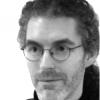Broadly, there are viewpoints on the approach the treatment of aging as a medical condition. The first approach is most clearly represented by the Strategies for Engineered Negligible Senescence (SENS). The goal is to repair or otherwise address the underlying cell and tissue damage that causes aging. This damage is already catalogued and new additions have been few and far between in recent decades. There is little expectation that therapies will have to be personalized to any great degree. Any one therapy that addresses any one cause of aging will produce benefits in every older person. In this, the damage repair approach is analogous to the initial development and early use of antibiotics. Antibiotics applied in much the same way to every patient produced such a large improvement in outcomes that personalization of use, even were it possible at the time, was a low priority. Personalization of treatments came only later. Thus the first step in the SENS program of damage repair is to produce therapies and test them to see how effectively they produce rejuvenation.
The second approach to the treatment of aging is called geroscience, and is largely focused on manipulating the operation of metabolism so as to slow aging. Today's open access paper provides a good summary of the geroscience program and goals. As a field it is very connected to personalized medicine, systems biology, and other views that prioritize differences between individuals. Geroscience starts from the point of considering that some people age more slowly than others, and then asks how we can do that for everyone, and whether there are ways to go a little further than presently exists in nature. The first step for the geroscience program is a great deal of further research aimed at obtaining a greater understanding of how specific differences in genetics, metabolism, and environment act to produce the observed differences in pace of aging and vulnerability to specific forms of cell and tissue damage and dysfunction.
At the end of the day, the most important difference between SENS-style damage repair and geroscience is that the latter is very limited in its ambitions (and most likely in outcomes) in the matter of human healthy life span. It seeks only to modestly slow aging, and will likely only achieve that goal. In contrast, damage repair approaches aim at outright rejuvenation. These two approaches to aging are not in conflict in principle, are complimentary strategies - but they are in conflict when it comes to the space of ideas, funding, and the will to make progress.
From geroscience to precision geromedicine: Understanding and managing aging
The last decade has witnessed a dramatic change in aging research. Geroscience is an emerging field that seeks to understand the biological mechanisms of aging and how they contribute to age-related diseases. It operates on the principle that aging is the primary risk factor for many age-related diseases, such as diabetes, cardiovascular disease, cancer, and neurodegenerative disorders. By studying the biological processes that drive aging, mostly in rodents and occasionally in non-human primates, geroscientists aim to develop interventions that can extend the quality of life and healthspan, i.e., the period of life spent in good health. In addition, geroscientists analyze specimens from healthy and diseased individuals of various ages to identify diagnostically relevant biomarkers of biological aging and to deconvolute age-associated pathways that can be targeted by gerotherapeutics for prevention or treatment of specific diseases. The acceleration of geroscientific discoveries has been fueled by the growing societal interest in aging, the creation of specific research centers, the expansion of public and private funding programs, and the increasing number of venture funds and biotech companies developing potential anti-aging remedies. The field holds promise for transforming the way we approach age-related diseases, shifting the focus from treating manifest conditions to targeting aging itself as a root cause.
Aging can be viewed as a process that is promoted by overactivation of gerogenes, i.e., genes and molecular pathways that favor biological aging, and alternatively slowed down by gerosuppressors, much as cancers are caused by the activation of oncogenes and prevented by tumor suppressors. Such gerogenes and gerosuppressors are often associated with age-related diseases in human population studies but also offer targets for modeling age-related diseases in animal models and treating or preventing such diseases in humans. Gerogenes and gerosuppressors interact with environmental, behavioral, and psychological risk factors to determine the heterogeneous trajectory of biological aging and disease manifestation. New molecular profiling technologies enable the characterization of gerogenic and gerosuppressive pathways, which serve as biomarkers of aging, hence inaugurating the era of precision geromedicine.
In our vision, geromedicine should pursue three general objectives that distinguish this discipline from other medical specialties that usually target manifest diseases. First and foremost, in (apparently) healthy individuals, geromedicine should apply a systems biology approach analyzing interactions of biological, clinical, psychological, social, and environmental measures to model and predict health trajectories, incidence of disease, and utilization of gerotherapeutics, hence proposing "proactive measures" to decelerate, halt, or reverse such effects. Second, geromedicine should spot "precocious derangements" - the potential precursors of disease - in still-healthy individuals to prevent the development of specific pathologies. Third, geromedicine should seek the biomarker-informed detection of "subclinical lesions" (such as asymptomatic cancers or arterial stenoses) to intercept them by early therapeutic intervention and hence to avoid their transition to clinically manifest diseases and the consequent health deterioration that would affect the entire organisms.
View the full article at FightAging








































